尽管3D打印技术拥有许多优势,但使用它的主要关注点之一是成本。从设计到制造再到后处理,一些技巧可以显著影响成本。本文重点介绍在3D打印过程中对节省成本有用的小贴士。
在3D打印每个阶段降低成本的小贴士
本部分根据3D打印过程的不同阶段分为三个部分,并提供尽可能降低成本的小贴士。以下是详细内容。
通过设计降低成本
空心3D模型
空心化是减少材料使用和降低成本的一个好方法。空心化可以去除部件内部的材料,仅留下一个外壳。这也是制作轻量化部件的良好方式。如果您计划使用激光烧结成型(SLS)或惠普尼龙多流射熔融成型(MJF)等使用粉末材料的3D打印技术,那么您可以考虑进行空心设计。
让我们来对比一下实心部件和空心部件的成本。


空心部件比实心部件便宜三倍。
请检查您的3D打印物体的尺寸
您的3D打印物体的尺寸直接影响3D打印价格。如果您的原型的尺寸不重要(例如视觉原型),您可以缩小模型以大幅降低成本。事实上,3D打印的价格与物体在机器托盘上占据的体积成正比。为了降低成本,建议在CAD软件中重新考虑您的物体尺寸。
让我们来比较一下模型(a)和它的缩小版模型(b)的成本:
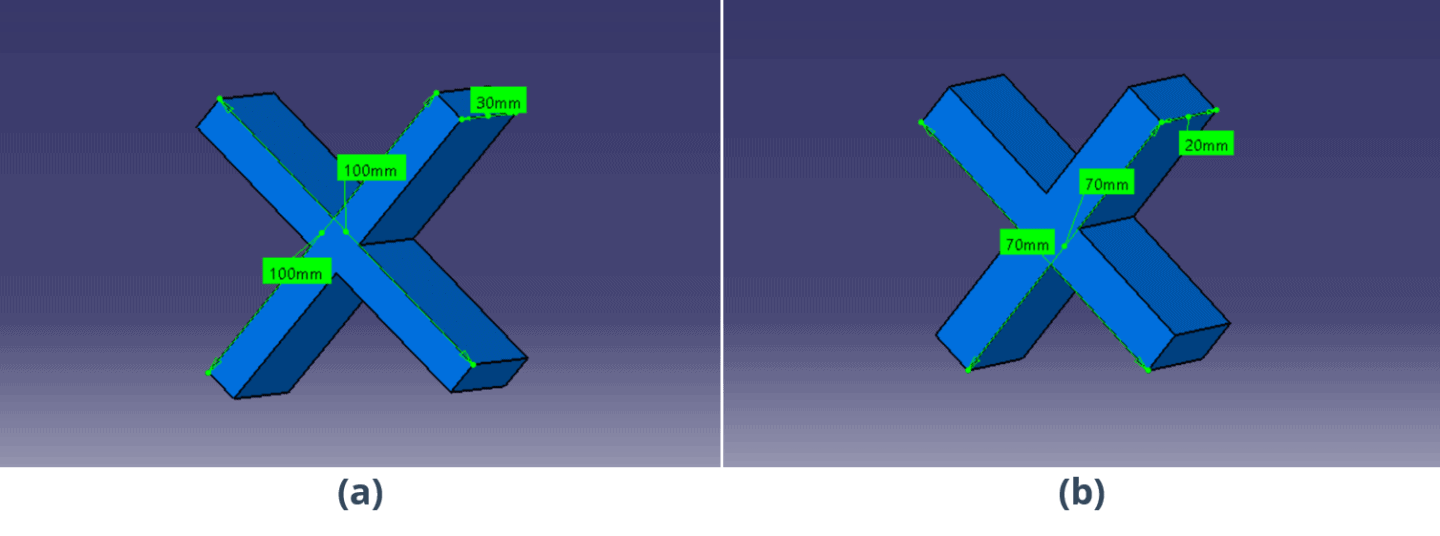
|
Technology |
Unit cost (€) |
Unit cost per 100 pieces (€) |
||
|
a |
b |
a |
b |
|
|
FDM |
18.54 |
10.57 |
5.69 |
3.00 |
|
MFJ |
26.75 |
24.30 |
16.36 |
7.68 |
成本对比可以清楚地看到缩小版模型更为便宜。
优化设计
精心设计的3D打印部件可以最大限度地利用材料,从而减少不必要的成本。
以下是一些小贴士:
- 使用渐进的过渡连接相邻的表面。
- 避免尖角,这往往会在成品工件中产生残余应力。
- 确保无支撑薄壁不要太高,否则它们可能会弯曲或变形。
- 浅角度的表面往往会出现难看的“阶梯状”,使其不适合作为外观特征,并需要后续处理来消除这些问题,增加成本。
- 智能设计。例如,下面这个既经济又不失功能的笔筒设计案例。
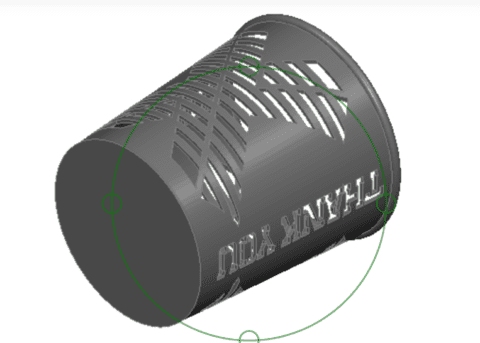
我们仅通过在底部打孔,就将价格降低了7%
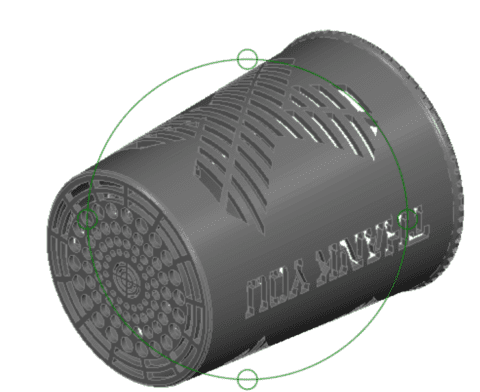
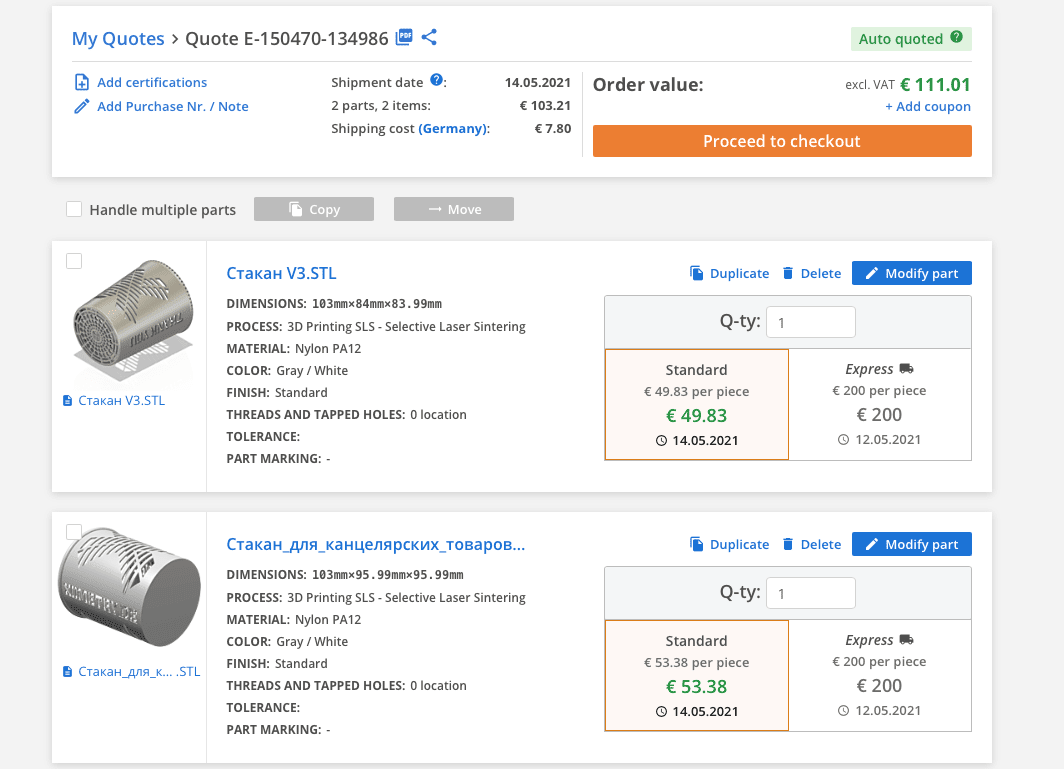
通过选择合适的制造选项来降低成本
选择合适的材料
降低材料成本的最佳方法是确保根据需求选择合适的材料。如果您打印的部件只是一个视觉模型,那么很可能不需要使用数字光学合成打印技术打印昂贵的连续液态界面生产树脂(CLIP)材料。高性能材料,如聚醚酰亚胺树脂(ULTEM)等材料的价格总是比聚酰胺(PA)或聚乳酸(PLA)等材料高。因此,合理选择材料有助于降低成本。
选择合适的工艺
与激光烧结成型(SLS)或数字光学合成打印等工艺相比,热塑性材料熔融沉积成型和惠普尼龙多流射熔融成型(MJF)技术要便宜得多,材料也非常容易获得且价格低廉。因此,建议先明确需求。如果您使用3D打印进行原型制作或视觉模型,热塑性材料熔融沉积成型、激光烧结成型(SLS)或惠普尼龙多流射熔融成型(MJF)都能很好地满足需求。如果您对技术要求较高并且希望获得高端打印,可以选择数字光学合成打印、树脂光固化成型、刚性光聚合物技术或直接金属激光熔融等工艺。
检查生产量
在生产单件或小批量(<100)时,3D打印是最佳选择。对于大批量生产,考虑使用塑料数控机床加工甚至注塑成型更为合适。如果设计复杂且传统加工无法实现,那么3D打印是一种选择;但如果设计简单且批量较大,从成本的角度考虑尽量避免使用3D打印。
通过后处理阶段降低成本
消除支撑结构
像惠普尼龙多流射熔融成型(MJF)或激光烧结成型(SLS)这样的工艺在构建部件时不需要支撑结构,但在热塑性材料熔融沉积成型中需要。最终在后处理阶段,这些支撑结构需要被移除,导致材料浪费和额外开支。因此,为了避免在后处理阶段的额外费用,请检查您的部件是否可以使用像激光烧结成型(SLS)或惠普尼龙多流射熔融成型(MJF)这样的粉末基技术制造。
选择后处理工艺
后处理有时需要手动后处理,这会增加3D打印的价格。例如,染色通常比涂装更便宜,因为染色是一种更快的技术。然而,涂装的颜色持久性更好,质量也更高。热塑性材料熔融沉积成型和惠普尼龙多流射熔融成型(MJF)提供了彩色3D打印,无需额外添加颜色,可以考虑在成本降低中使用。诸如蒸汽抛光以光滑表面纹理的工艺也会增加成本。您可以根据需求选择最适合的工艺。
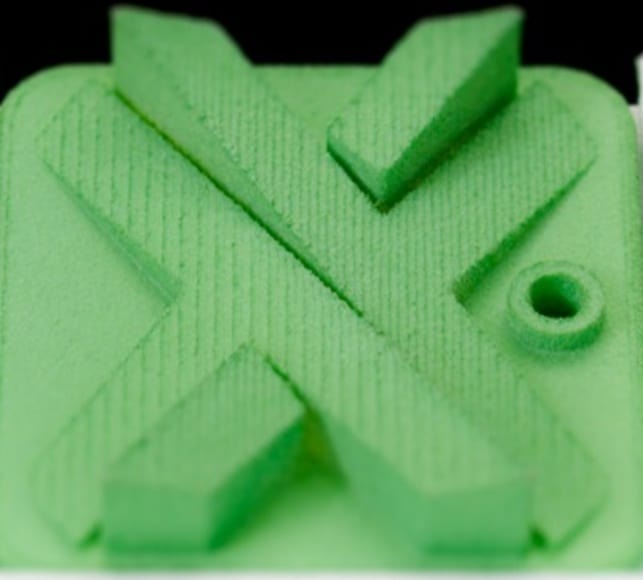
结语
3D打印的成本可以在设计、制造和后处理的各个阶段进行压缩。通过遵循我们的建议,您可以确保您的3D打印成本保持在合理水平。欢迎将您的设计上传至即时报价引擎,以获取即时报价,并比较您的设计迭代和可能的制造选项。
推荐阅读:专业3D打印服务